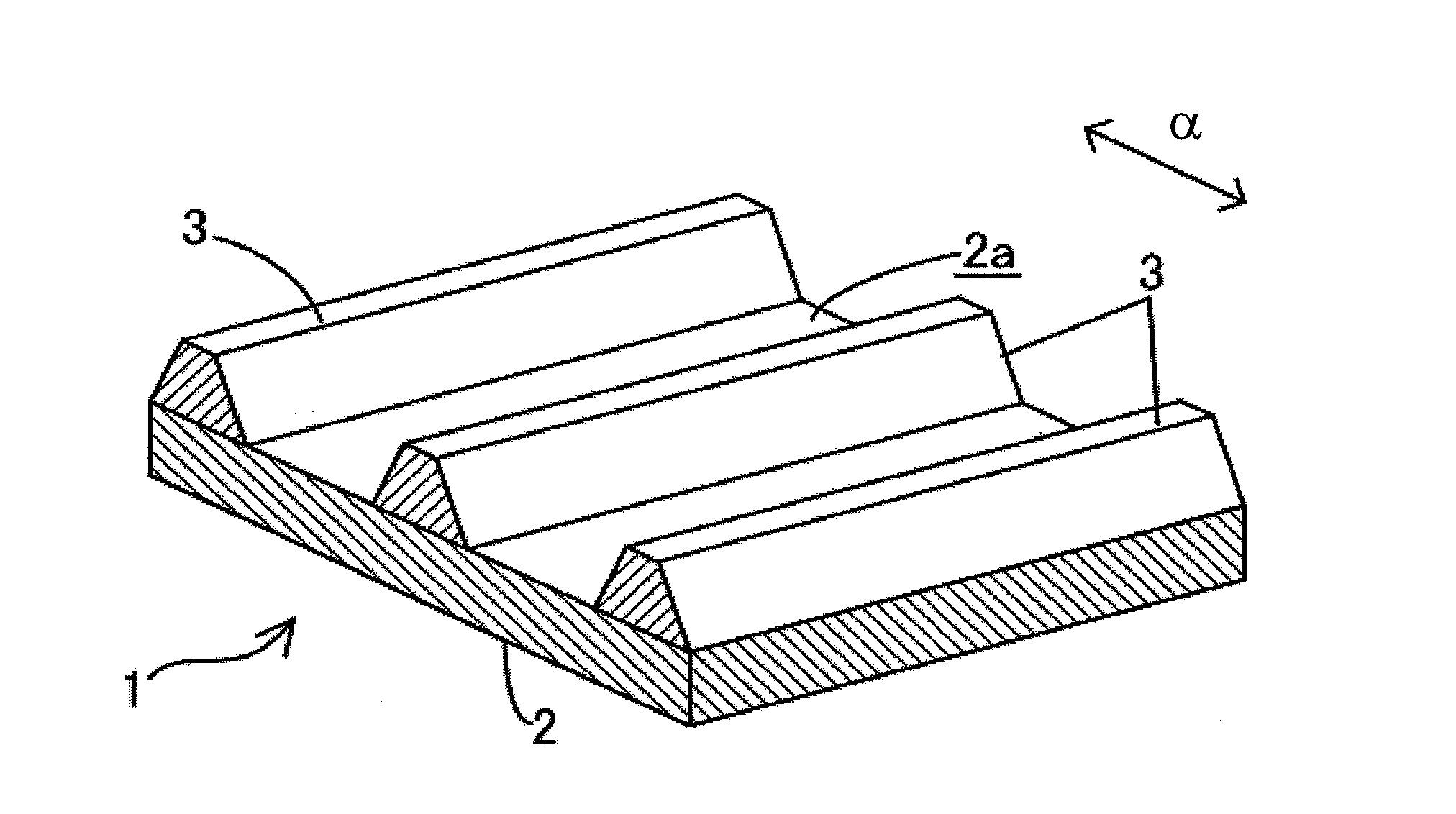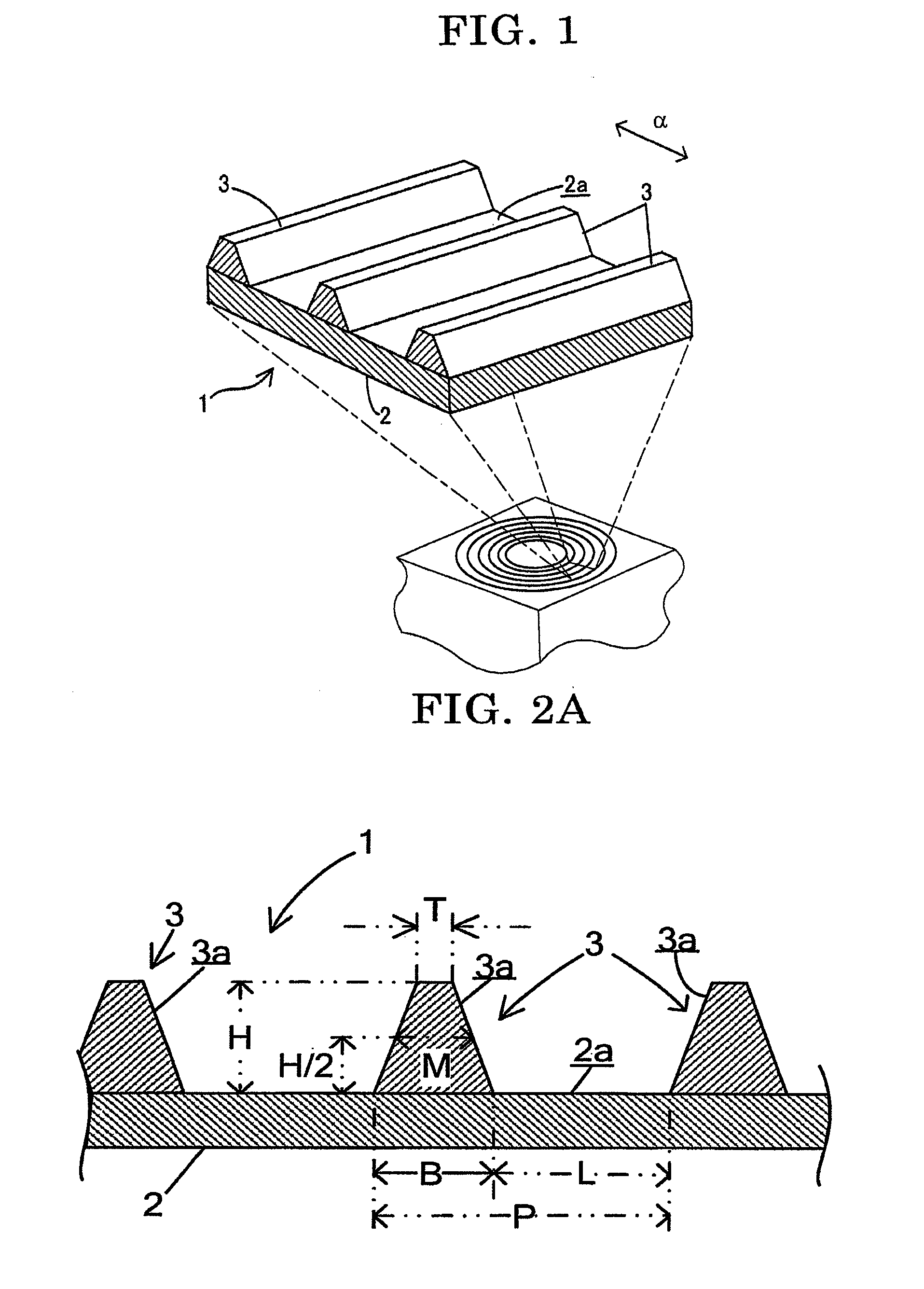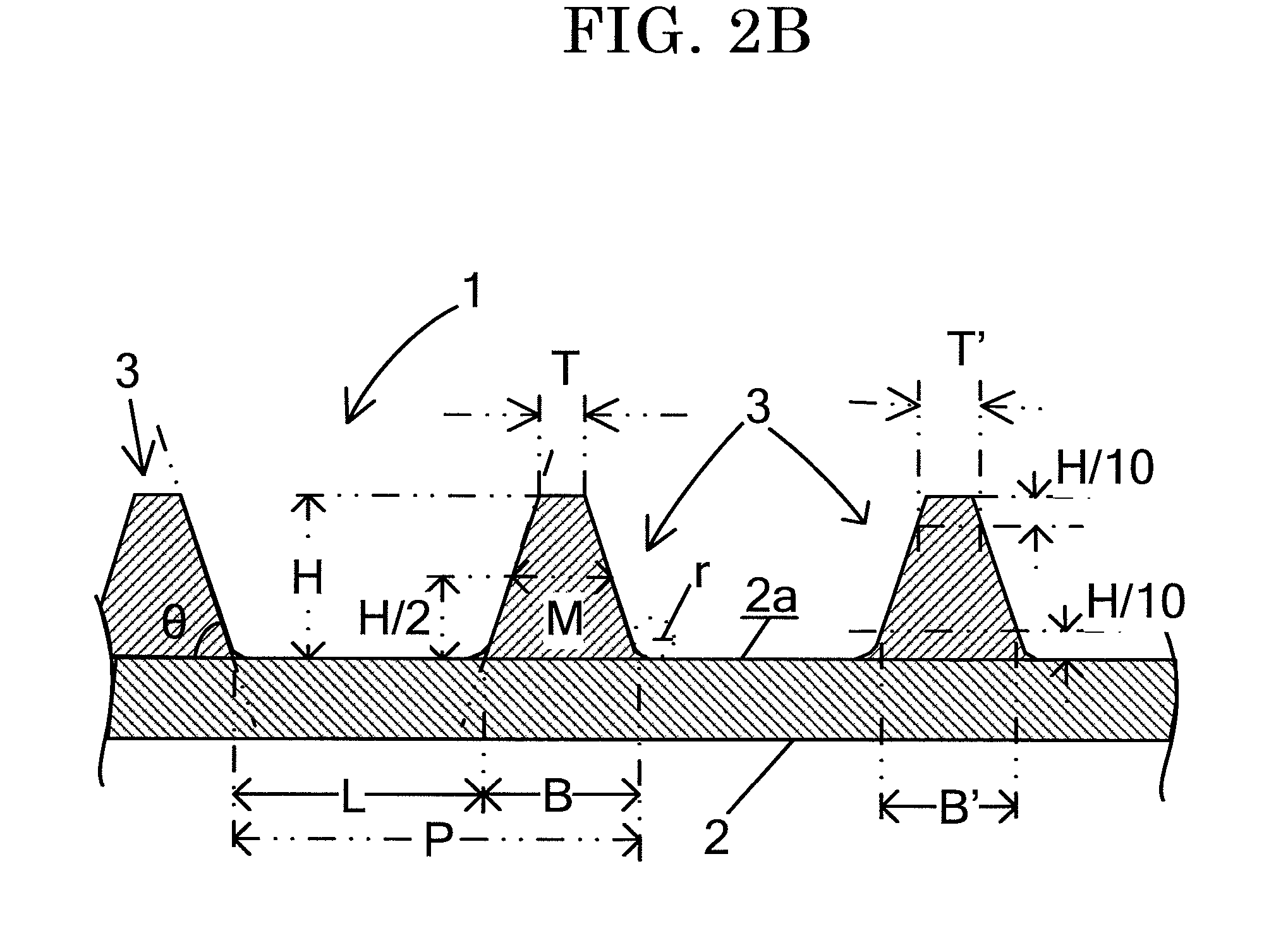Mold structure
a technology of mold structure and resist layer, applied in the field of mold structure, can solve the problems of inability to obtain an appropriate resist, inability to push out a resist layer, and limit the improvement of surface recording density, so as to achieve efficient transfer of high-quality patterns, less crosstalk, and high signal integrity
- Summary
- Abstract
- Description
- Claims
- Application Information
AI Technical Summary
Benefits of technology
Problems solved by technology
Method used
Image
Examples
first embodiment
[0053]FIG. 3 is a cross-sectional view showing a method for producing a mold structure according to a first embodiment. As shown in FIG. 3, first of all, a photoresist solution of PMMA (polymethylmethacrylate), etc. is applied onto an Si (silicon) substrate 10 by means of spin coating or the like, and a photoresist layer 21 is thus formed.
[0054]After that, while the substrate 10 is being rotated, a laser beam (or an electron beam) modulated correspondingly to a servo signal is applied, and a predetermined pattern, for example a pattern corresponding to the servo signal that linearly extends in the radial direction from the rotational center to tracks, is transferred by means of exposure onto portions corresponding to circumferential frames on the whole surface of the photoresist.
[0055]Subsequently, the photoresist layer 21 undergoes a developing process, the exposed portions are removed, then selective etching is conducted in accordance with RIE (reactive ion etching) or the like as...
second embodiment
[0057]FIGS. 4A to 4B are cross-sectional views showing a method for producing a mold structure according to a second embodiment. As shown in FIG. 4A, first of all, a photoresist solution of PMMA, etc. is applied onto an Si (silicon) substrate 10 by means of spin coating or the like, and a photoresist layer 21 is thus formed.
[0058]After that, while the substrate 10 is being rotated, a laser beam (or an electron beam) modulated correspondingly to a servo signal is applied, and a predetermined pattern, for example a pattern corresponding to the servo signal that linearly extends in the radial direction from the rotational center to tracks, is transferred by means of exposure onto portions corresponding to circumferential frames on the whole surface of the photoresist.
[0059]Subsequently, the photoresist undergoes a developing process, the exposed portions are removed, then selective etching is conducted in accordance with RIE or the like as the photoresist pattern serves as a mask, and ...
third embodiment
[0065]FIG. 5 is a cross-sectional view showing a method for producing a mold structure according to a third embodiment. As shown in FIG. 5, first of all, a photoresist solution of PMMA, etc. is applied onto a quartz substrate 30 by means of spin coating or the like, and a photoresist layer 21 is thus formed.
[0066]After that, while the quartz substrate 30 is being rotated, a laser beam (or an electron beam) modulated correspondingly to a servo signal is applied, and a predetermined pattern, for example a pattern corresponding to the servo signal that linearly extends in the radial direction from the rotational center to tracks, is transferred by means of exposure onto portions corresponding to circumferential frames on the whole surface of the photoresist.
[0067]Subsequently, the photoresist layer 21 undergoes a developing process, the exposed portions are removed, then selective etching is conducted in accordance with RIE or the like as the pattern of the photoresist layer 21 after t...
PUM
| Property | Measurement | Unit |
|---|---|---|
| width roughness | aaaaa | aaaaa |
| aspect ratio | aaaaa | aaaaa |
| 45°≦θ | aaaaa | aaaaa |
Abstract
Description
Claims
Application Information
 Login to View More
Login to View More - R&D
- Intellectual Property
- Life Sciences
- Materials
- Tech Scout
- Unparalleled Data Quality
- Higher Quality Content
- 60% Fewer Hallucinations
Browse by: Latest US Patents, China's latest patents, Technical Efficacy Thesaurus, Application Domain, Technology Topic, Popular Technical Reports.
© 2025 PatSnap. All rights reserved.Legal|Privacy policy|Modern Slavery Act Transparency Statement|Sitemap|About US| Contact US: help@patsnap.com



